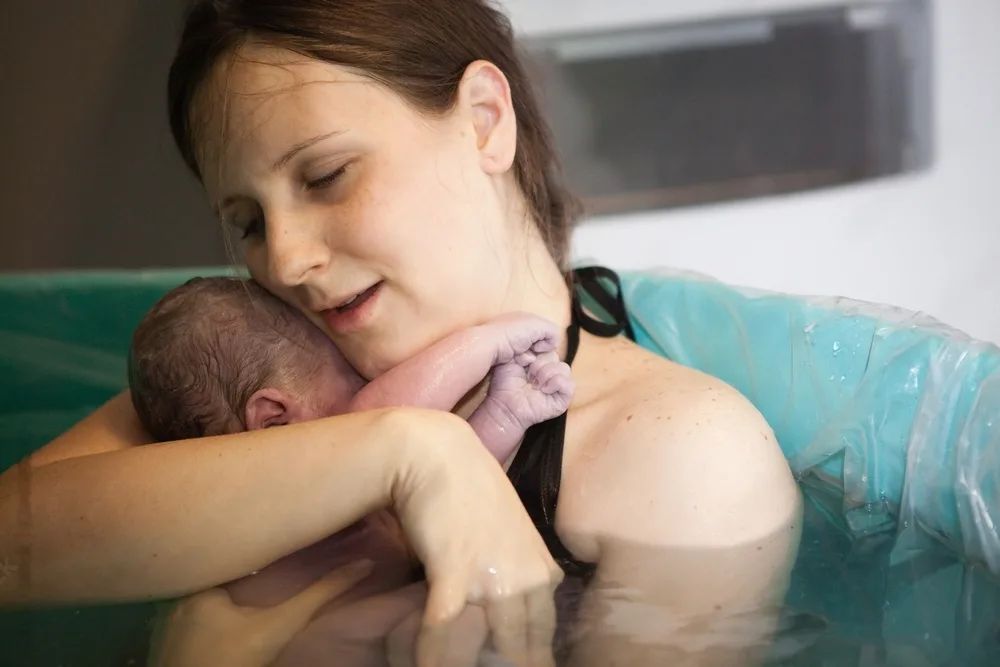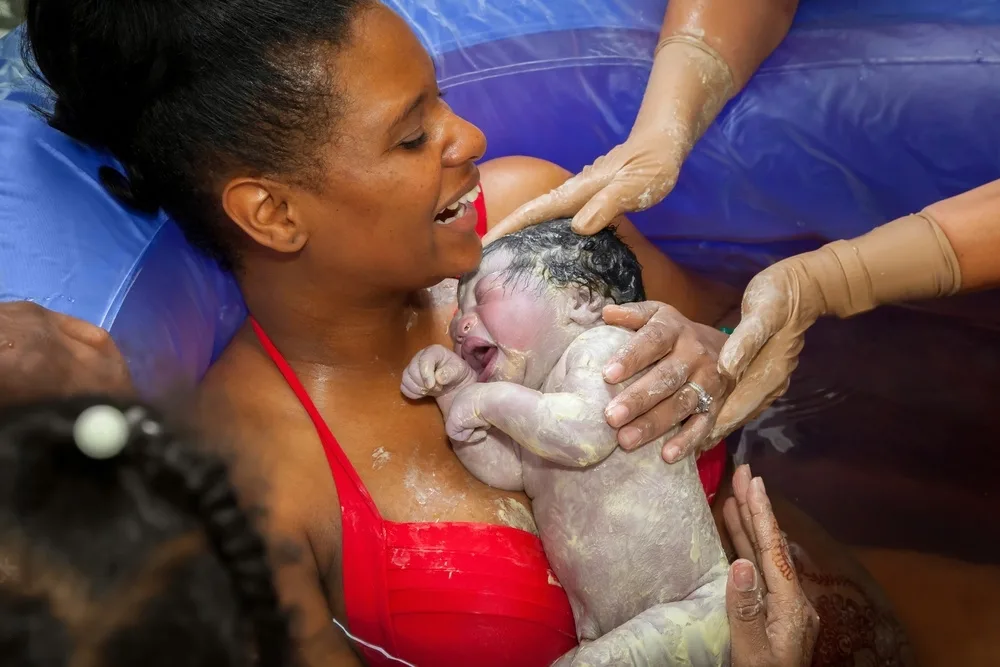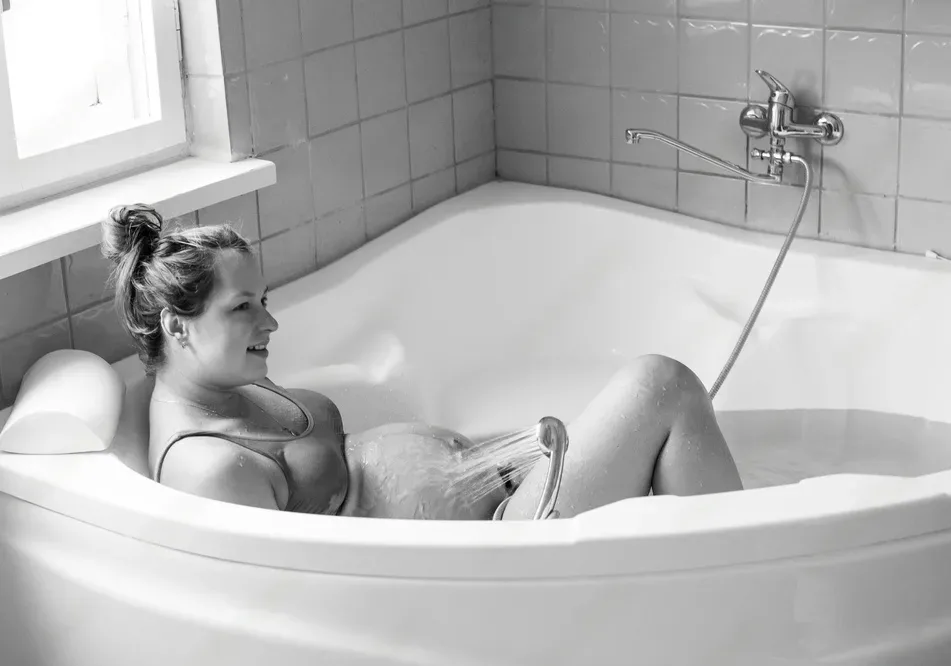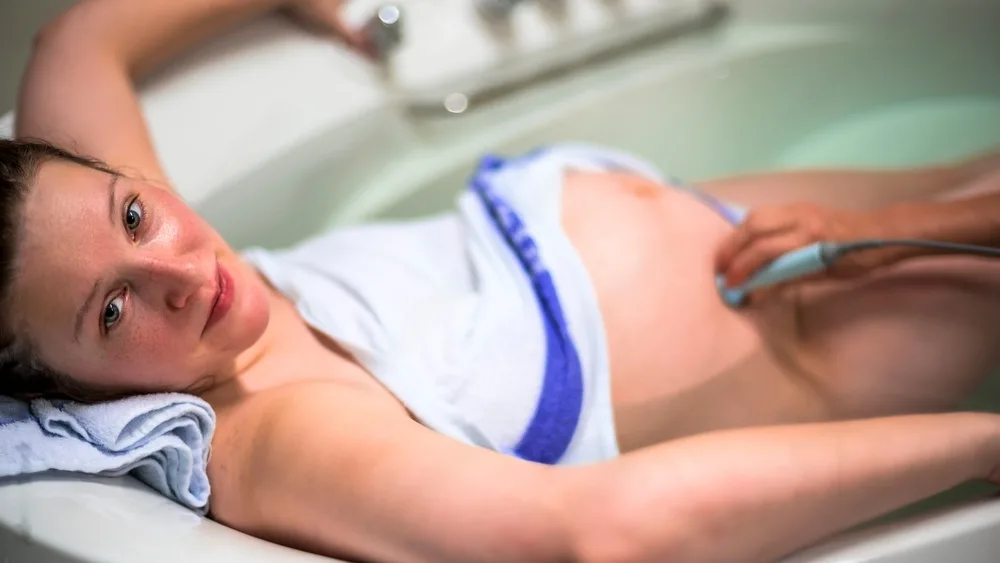Water Birth Unveiled: Making Waves with Delightful Benefits
I never realized the benefits of water birth until I experienced it myself. As a first-time mother, I was nervous about giving birth and wanted to make the experience as comfortable as possible. That’s when my midwife suggested trying water birth.
As I immersed myself in the warm water, I felt an immediate sense of relief and relaxation. The pain seemed to subside, and I was able to move more freely than before. It was then that I realized embracing natural pain relief for a joyful birth.
In this article, we will explore the history of water birth, its benefits for both mother and baby, preparation and safety measures you should take, and real-life stories from mothers who have experienced it firsthand.
So let’s dive into the wonderful world of water birth!
A Brief History of Water Birth
You’re about to learn the fascinating story of how people have been giving birth in water for centuries, from ancient civilizations to modern midwifery practices.
The Water Birth Evolution began in ancient Greece where women would give birth in warm water baths. They believed that the buoyancy and relaxation brought by the water could ease labor pains and promote a faster delivery.
This practice was then adopted by the Egyptians who also used warm water but added herbs and oils to make it more effective.
Throughout history, different cultures have developed their own Water Birth Techniques. In Japan, women would immerse themselves in hot springs during pregnancy and labor to promote relaxation and pain relief. In Africa, some tribes use rivers or streams as a natural birthing pool while others dig a hole in the ground and fill it with warm water.
These practices were rediscovered by modern midwives who saw the benefits of using water during childbirth – leading us to explore further into its benefits for the mother.
Now let’s dive into how water labor can benefit mothers during childbirth.
Benefits for the Mother
As a mother, immersing yourself in water during childbirth can provide you with numerous advantages that can enhance your overall birthing experience. Not only is it an effective way to manage pain during labor, but it also offers a range of benefits for both prenatal hydration and postpartum recovery. Here are five reasons why you should consider water birth:
– Water immersion can help reduce stress and anxiety levels during childbirth.
– The buoyancy of the water helps alleviate pressure on joints and muscles, allowing for more comfortable movements.
– Water birth promotes relaxation and encourages deeper breathing, which facilitates oxygen flow to the baby.
– The warm water can increase blood circulation, which aids in reducing swelling and promoting healing after birth.
– Immersing in water can stimulate the release of oxytocin, a hormone that helps regulate contractions during labor.

By choosing water birth, mothers can enjoy these benefits while providing a more gentle birthing experience for their babies.
Speaking of which…
In addition to benefiting mothers during childbirth, water labor also has significant advantages for newborns.
Benefits for the Baby
As a mother-to-be, I’m excited to learn about the benefits of water birth for my baby.
One key benefit is that being immersed in warm water can improve oxygen supply to the baby, helping them to breathe more easily.

Additionally, water birth has been shown to reduce the risk of trauma during delivery and provide a calmer transition into the outside world for infants.
Overall, these benefits make me even more eager to explore this option for my upcoming delivery.
Improved Oxygen Supply
Take a deep breath and feel the rush of oxygen flowing through your body, boosting your energy levels and increasing your endurance during water-based labor.
One of the significant advantages of water birth is that it enhances the mother’s ability to breathe deeply and effectively, which helps to maintain optimal oxygen supply for both mother and baby. Breathing techniques are essential in any form of childbirth, but buoyancy training in water can make breathing more comfortable while also improving lung capacity.

The increased buoyancy in water reduces pressure on the lungs, allowing them to expand more fully without as much effort. This results in an increase in oxygen uptake, leading to reduced fatigue during labor.
Additionally, deeper breathing can help calm the mind and lower stress levels, making it easier for mothers to focus on delivering their babies calmly and efficiently.
With improved oxygen supply from water labor comes reduced risk of trauma for both mother and child – another vital benefit worth exploring further.
Reduced Risk of Trauma
You’ll be glad to know that the risk of harm to you and your baby is significantly decreased with water immersion during childbirth, ensuring a smoother ride for both of you.
There are many water birth myths out there, one of which is that it can lead to infections or complications. However, studies have shown that water birth techniques are not only safe but also provide benefits such as reducing the risk of trauma.
Water helps alleviate the pressure on your joints and muscles, making it easier for you to move around and change positions during labor. This means less stress on your body and more comfort for you and your baby. Moreover, the buoyancy provided by water allows for greater mobility in the pelvic area, increasing blood flow to the uterus and relaxing tense muscles. All these factors contribute to a reduced risk of tearing or perineal trauma during delivery.

With minimized risks associated with traditional childbirth methods, underwater births offer an alternative option for mothers who want a natural birthing experience.
Transitioning from the safety and warmth of the womb into the outside world can be challenging for newborns. In my next paragraph, I will discuss how immersion in warm water can help ease this process without causing shock or distress to babies – another benefit of water labor worth exploring further!
Calmer Transition to the Outside World
Reduced risk of trauma during water birth is just the beginning of its benefits. As someone who’s experienced it firsthand, I can attest to the calmer transition to the outside world that my baby had.
The warm and weightless environment of the water provided a soothing atmosphere that helped reduce tension and stress during delivery. Moreover, relaxation techniques such as deep breathing and visualization can be easily incorporated into water labor, making pain management more manageable for expectant mothers. The buoyancy of the water also lessens pressure on joints and muscles, allowing for greater mobility during labor.

Overall, these factors contribute to a more positive childbirth experience for both mother and baby.
Transitioning into preparation and safety, it’s important to note that while water birth can be an effective option for many women, it’s not suitable for everyone. Consult with your healthcare provider beforehand to ensure that you’re a good candidate for this method of delivery.
Safety measures such as maintaining proper temperature control, monitoring maternal vital signs regularly, and having trained staff present are necessary precautions to take when opting for water labor.
Preparation and Safety
As I prepare for my water birth, there are three key points that I’m keeping in mind:
– Choosing a certified provider
– Creating a comfortable environment
– Monitoring for potential complications
It’s important to select a healthcare professional who has experience with water birth and is knowledgeable about safety protocols. Additionally, it’s crucial to ensure that the birthing space is set up in a way that promotes relaxation and ease.
Finally, while water birth can be a safe option for many women, it’s essential to monitor closely for any signs of distress or complications.
Choosing a Certified Provider
When it comes to selecting a certified provider for your water birth, it’s important to do your research and choose someone who is experienced and knowledgeable in this specialized area of childbirth. Here are some tips to help you choose the right provider:
– Look for providers who are certified by reputable organizations such as Waterbirth International or the American College of Nurse-Midwives.
– Ask about their experience with water birth and how many they’ve attended. You want someone who has a lot of experience with this type of delivery.
– Find out what their policies are regarding pain management during labor and delivery. Make sure you’re comfortable with their approach.
– Check if your insurance covers the cost of a water birth or if there are any additional costs you need to consider.
Choosing the right provider can make all the difference in ensuring that your water birth is a safe and positive experience. Once you have found a qualified professional, it’s time to start thinking about creating a comfortable environment for yourself during labor and delivery.
Creating a Comfortable Environment
Now it’s time to get cozy and prepare for a comfortable water birth experience. One of the most important factors in creating a comfortable environment is getting the water temperature just right. The ideal temperature for laboring in water is around 95-98 degrees Fahrenheit, which is slightly warmer than your body temperature. This will help keep you relaxed and at ease during the process.
It’s also essential to monitor the water temperature throughout labor, as it may need to be adjusted depending on how long you are in the tub. Another crucial aspect of creating a comfortable environment is choosing the right labor positions. In water, you have more freedom of movement and can try different positions that may not be possible on land.
Some popular options include squatting, kneeling, or leaning forward onto your partner or support person. These positions can help alleviate pressure and allow for easier movement during contractions. Remember to communicate with your birth team about what feels best for you throughout the process.
With these elements in place, you’re well on your way to a relaxing and enjoyable water birth experience. As we move into monitoring for potential complications, it’s essential to remember that while water births are generally considered safe for low-risk pregnancies, there are still risks involved with any type of childbirth.
It’s crucial to pay attention to any warning signs or red flags throughout labor and delivery so that medical intervention can be sought if necessary.
Monitoring for Potential Complications
Let’s keep an eye out for any potential issues during the birth process to ensure a safe and comfortable delivery. Continuous monitoring is essential in water birth, as it can help detect any problems that may arise and prompt emergency procedures if necessary. This type of monitoring involves the use of electronic fetal monitors that are waterproof and can be worn by the mother throughout labor.
It’s important to note that while water labor has many benefits, certain complications may still occur. For example, if the baby shows signs of distress or if there is excessive bleeding, emergency procedures may need to be performed immediately. However, with proper monitoring and communication between the birthing team and mother, these situations can often be handled quickly and effectively.
By staying vigilant during the birth process, we can ensure a safe and positive experience for both mother and baby.
Real-life stories illustrate how successful water births have become increasingly popular over the years without compromising safety measures.
Real-Life Stories
The real-life stories shared in this section showcase the positive impact of using water during childbirth. As someone who’s experienced water birth myself, I can attest to the emotional and physical benefits it brought me.
Here are some success stories that highlight how water birth positively impacted their birth experience:
– One mother shared how being in the water helped her relax and manage the pain better, allowing her to have a natural birth without any pain medication.
– Another mother talked about feeling more connected with her baby while in the tub and how it helped ease her anxiety during labor.
– A third mother shared how having a supportive community around her made all the difference in making water labor possible for her.
These personal experiences show that using water during childbirth can be a wonderful option for many women. However, it’s important to consider medical considerations and seek out practical tips from professionals to ensure a safe and successful experience.
Frequently Asked Questions
What are the recommended water temperatures for water labor?
When it comes to water birth, the ideal water temperatures can vary depending on personal preference. However, most women find that warm water immersion is the most beneficial during labor. The warmth of the water helps to relax muscles and increase blood flow, which can lead to a more comfortable and efficient labor experience.
In terms of specific temperatures, experts suggest keeping the water between 95-100 degrees Fahrenheit for maximum benefits. It’s important to note that water that is too hot can be dangerous for both mom and baby, so it’s crucial to monitor the temperature regularly.
Overall, incorporating warm water immersion into your labor plan can have numerous benefits and may help make your birthing experience more enjoyable.
How long should a mother stay in the water during labor?
As a mother who’s experienced water birth, I can attest to the incredible benefits of immersing oneself in warm water during childbirth.
However, it’s important to note that there’s an optimal duration for water immersion during labor.
While every woman’s experience is unique, experts recommend staying in the water for no longer than two hours at a time.
Prolonged exposure to warm water can lead to dehydration and may even slow down labor progress.
It’s crucial to listen to your body and communicate with your healthcare provider about when it’s time to get out of the tub or pool.
Remember, the goal is not just a comfortable birth but also a safe one for both you and your baby.
Can a mother with a high-risk pregnancy still have a water birth?
If you’re considering a water birth and have a high-risk pregnancy, it’s important to discuss your options with your healthcare provider. High-risk considerations may include pre-eclampsia, gestational diabetes, or placenta previa.
However, if cleared by your doctor, the benefits of water birth can still be available to you. Immersing yourself in warm water during labor can help reduce pain and discomfort, lower blood pressure, and provide a sense of relaxation that can aid in the birthing process.
It’s important to remember that every pregnancy is unique and what works for one person may not work for another. Be sure to have an open conversation with your healthcare provider about whether a water birth is right for you.
Are there any potential risks or complications associated with water labor?
Possible concerns and safety measures must be taken into account when considering water labor. While this method has been shown to offer numerous benefits, such as pain relief, relaxation, and shortened labor times, it is important to remember that there are some potential risks involved.
For example, there’s a small risk of infection if the water isn’t kept at the proper temperature or if the tub isn’t properly cleaned between uses. Additionally, if the mother experiences any complications during labor, such as high blood pressure or excessive bleeding, she may need to be transferred out of the tub immediately for medical intervention.
To mitigate these risks, it’s crucial that expecting mothers work with a qualified healthcare provider who’s experienced in water labor and can provide guidance around safety measures before and during delivery.
What equipment is necessary for a water birth and where can it be obtained?
Diving into the world of water birth equipment can be overwhelming, but with a little research and patience, it’s possible to find everything you need for a successful delivery.
The most important piece of equipment is the birthing pool itself, which can be purchased or rented from various companies online. Costs vary depending on size and features, but it’s important to invest in a high-quality pool that meets safety standards.
Other necessary items include a thermometer to monitor temperature, a hose for filling the pool, and a net to remove any debris. Some mothers also choose to use waterproof mats or cushions for added comfort during labor.
While the cost of water birth equipment can add up quickly, many parents find that the benefits of this unique birthing experience make it well worth the investment.
Conclusion
As I emerge from the warm and soothing waters of the birthing pool, I feel a sense of renewal and strength wash over me. The experience of water labor has been nothing short of transformative. It allowed me to tap into my body’s natural instincts and find comfort in the midst of childbirth.
Like a gentle wave carrying me to shore, the water provided support and ease during each contraction. Beyond the physical benefits, water labor also brought about emotional healing and empowerment. As I floated weightlessly in the pool, surrounded by loved ones and supportive caregivers, I felt a deep sense of connection to myself and my baby.
The water became a symbol of safety and tranquility amidst the chaos of childbirth. Overall, discovering the delightful benefits of water labor has been one of the most powerful experiences in my life as a mother. It’s my hope that more women will have access to this incredible option for childbirth, allowing them to harness their inner strength and ride out each wave with grace and confidence.







